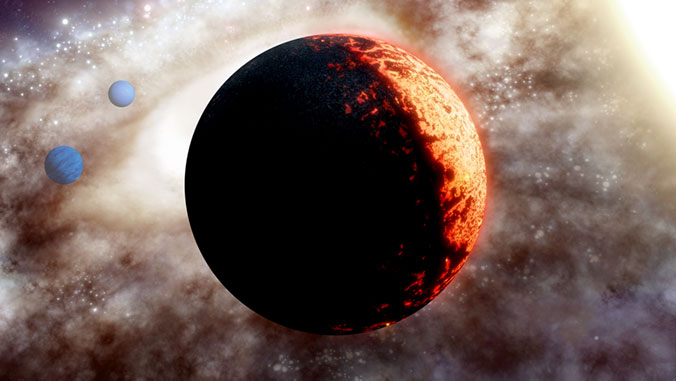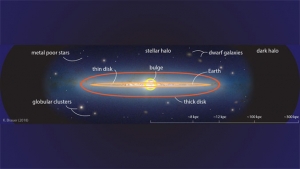
Almost all of the planets discovered to date (including the solar system planets) are confined to the plane of the Milky Way, and are unable to glimpse a sweeping vista of our galaxy. However, astronomers at the University of Hawaiʻi Institute for Astronomy (IfA) using telescopes at the W. M. Keck Observatory on Maunakea have discovered a rocky planet with a different kind of view.
The planet orbits the star TESS Object of Interest (TOI) 561, named for the ongoing NASA TESS planet hunting mission. TOI-561 belongs to a rare population of stars called the galactic thick disk. Thick disk stars are chemically distinct, with fewer trace heavy elements (and especially less iron) than typical stars of the Milky Way, suggesting they formed early, approximately 10 billion years ago. They also have wandering motions that can lift them out of the galactic plane, providing an epic view of our own spiral galaxy.

“The rocky planet orbiting TOI-561 is one of the oldest rocky planets yet discovered. Its existence shows that the universe has been forming rocky planets almost since its inception 14 billion years ago,” said Lauren Weiss, Beatrice Watson Parrent Postdoctoral Fellow at IfA and leader of the team that discovered the TOI-561 planetary system.
The result was announced at a press conference at the January 2021 meeting of the American Astronomical Society and published in Astronomical Journal.
The rocky planet orbiting TOI-561 transits its star, meaning that the planet passes in front of its star as seen from Earth, blocking a fraction of the starlight. The planet is small, with a radius only one and a half times that of Earth. As a result, the reduction of light it causes is miniscule, just 0.025% of the star’s brightness.
IfA astronomers noticed this change in intensity and used Keck Observatory’s High Resolution Echelle Spectrometer to confirm the presence of the planet. By measuring the wobble of the star induced by the planet’s gravity, they were able to infer that the planet has three times the mass of Earth. Combining this mass with the radius determined from the transits, the team concluded that the planet is most likely rocky, perhaps with less iron than Earth.
TOI-561 has at least two other planets transiting the star, both of which have about twice Earth’s radius and are too large and low-mass to be rocky.
For more information see the IfA website.
https://www.hawaii.edu/news/2021/01/11/rocky-planet-discovered/
2021-01-11 21:38:49Z
CBMiP2h0dHBzOi8vd3d3Lmhhd2FpaS5lZHUvbmV3cy8yMDIxLzAxLzExL3JvY2t5LXBsYW5ldC1kaXNjb3ZlcmVkL9IBAA
Bagikan Berita Ini
















0 Response to "Rocky planet discovered around one of the galaxy's oldest stars - UH System Current News"
Post a Comment